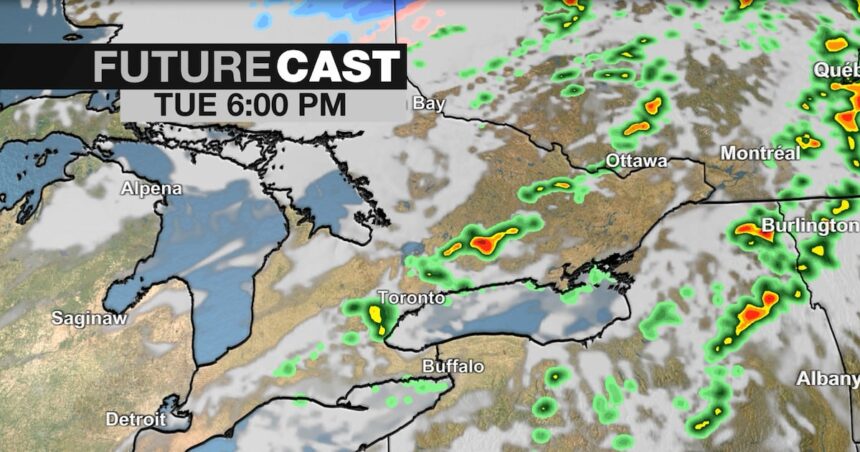The sky over Toronto transformed into a battleground Thursday evening as severe thunderstorms tore through the city, leaving approximately 26,000 residents without power and forcing many to seek shelter from torrential downpours and dangerous lightning.
“We haven’t seen a storm system this intense since last summer’s derecho event,” said Toronto Hydro spokesperson Mallory Richards. “Crews are working around the clock in challenging conditions to restore service, but some areas may not see power return until early Friday.”
The thunderstorm warning, issued by Environment Canada at 6:45 p.m., prompted immediate emergency responses across the Greater Toronto Area. Wind gusts reaching 90 km/h toppled trees and power lines throughout Scarborough, North York and downtown neighborhoods, creating hazardous conditions for both pedestrians and drivers.
Toronto Hydro’s outage map revealed concentrated damage in the city’s west end and parts of Etobicoke, where entire blocks went dark shortly after 7:30 p.m. Emergency services reported a 300% increase in weather-related calls compared to normal evening volumes.
Transit systems felt the storm’s impact as well. The TTC temporarily suspended service on portions of the Bloor-Danforth line due to signal failures, while GO Transit reported delays averaging 45 minutes across multiple routes as crews cleared debris from tracks.
At Pearson International Airport, more than 85 flights faced delays or cancellations as aircraft were grounded during the height of the electrical activity. Airport authorities implemented ground stops that rippled through the evening’s flight schedule.
The severe weather arrived as the culmination of a humidity-soaked day where temperatures reached 32°C but felt closer to 40°C with the humidex. Meteorologists at Environment Canada noted this pattern of intense, isolated storms has become increasingly common in the region during summer months.
“What we’re witnessing is consistent with climate change models that predict more frequent and powerful convective storms in southern Ontario,” explained Dr. Alisha Thompkins, meteorologist with the University of Toronto’s Climate Studies Department. “The combination of urban heat island effect and atmospheric instability creates perfect conditions for these destructive systems.”
For residents in affected areas, the immediate concern remains basic services. Local community centers have opened cooling stations for those without air conditioning, while emergency management officials urge residents to check on vulnerable neighbors, particularly seniors who may be isolated without power.
As repair crews work through the night, Toronto faces the aftermath of nature’s fury—a stark reminder of infrastructure vulnerability even in Canada’s largest urban center. With more unsettled weather forecast for Friday, the question remains: Is Toronto’s aging power grid prepared for climate change’s intensifying storm patterns?
Follow ongoing coverage of the storm recovery efforts on our CO24 Breaking News page for the latest updates.










